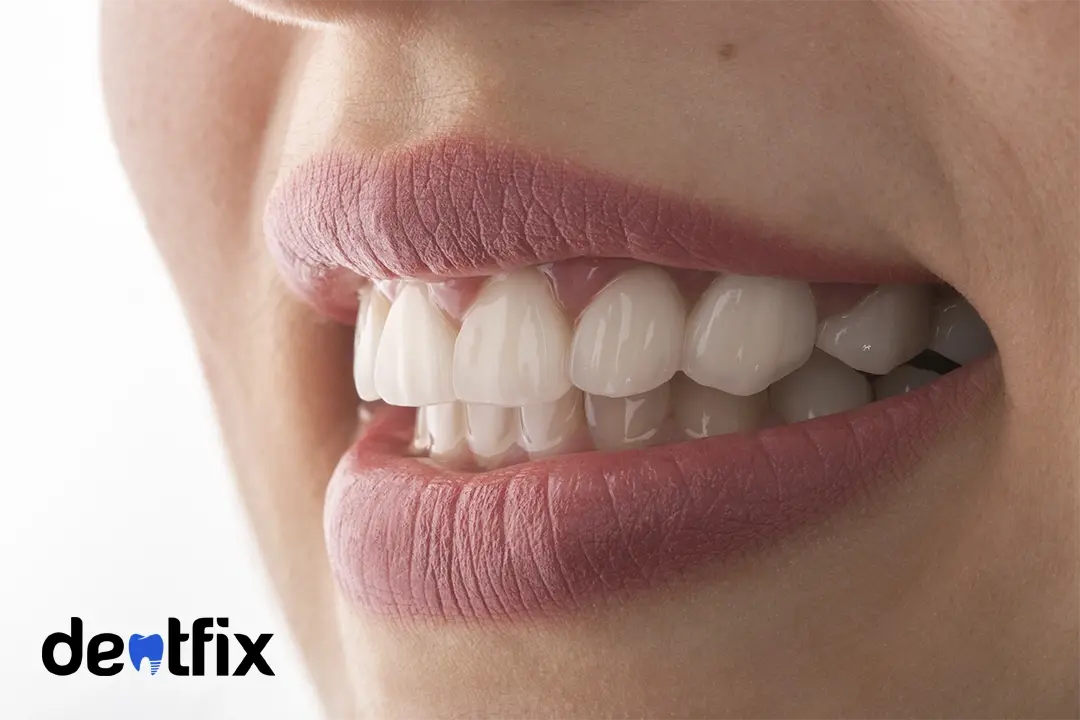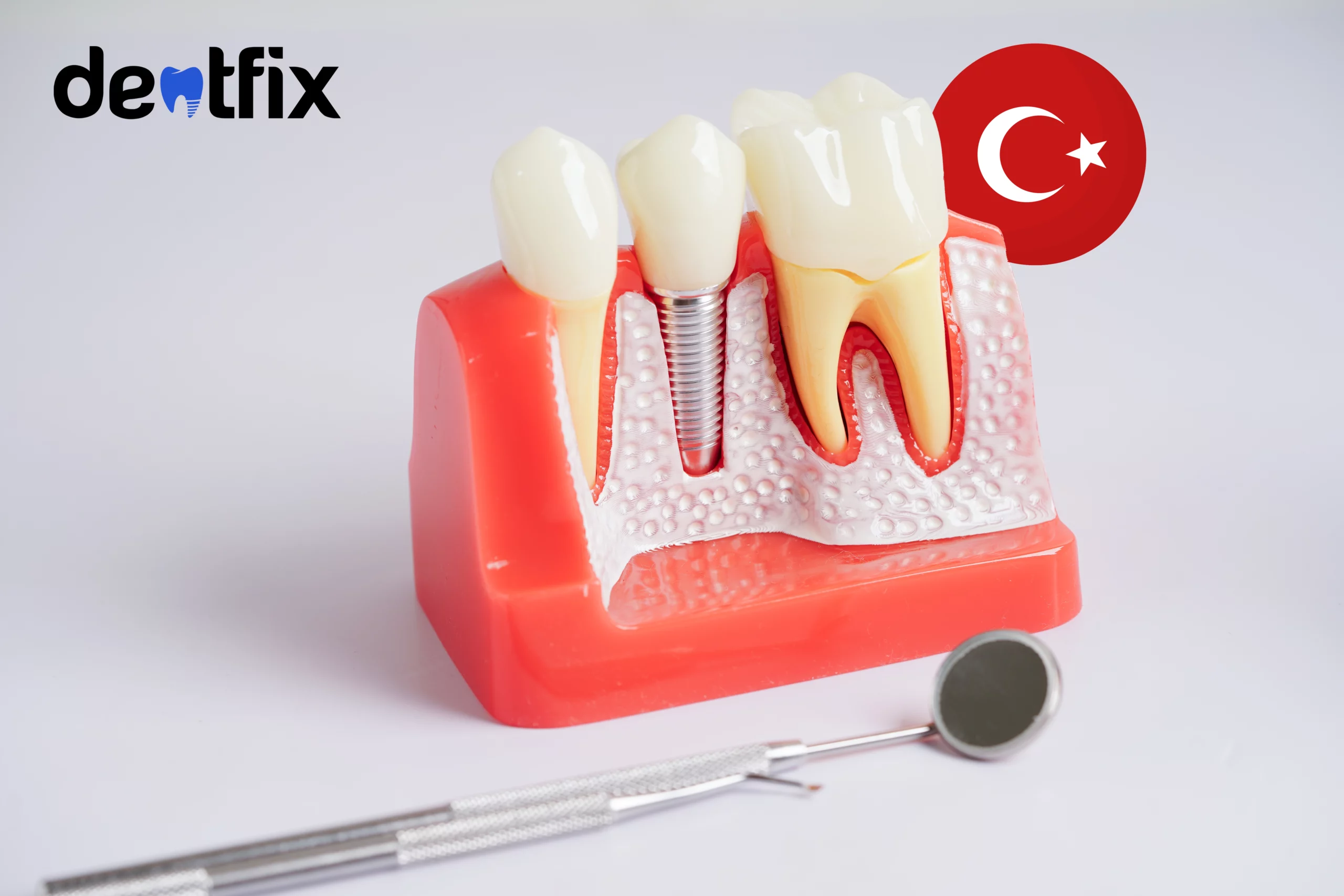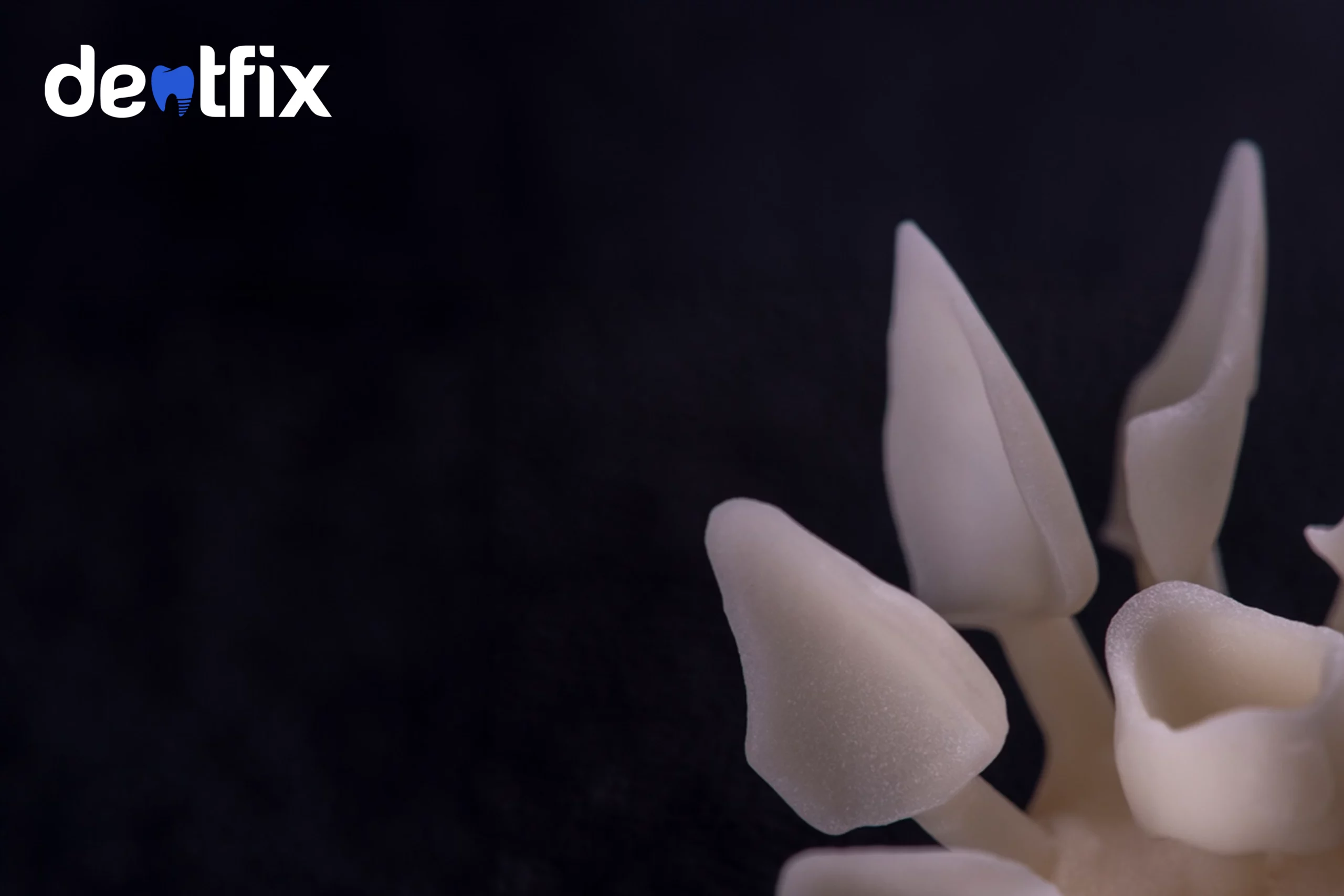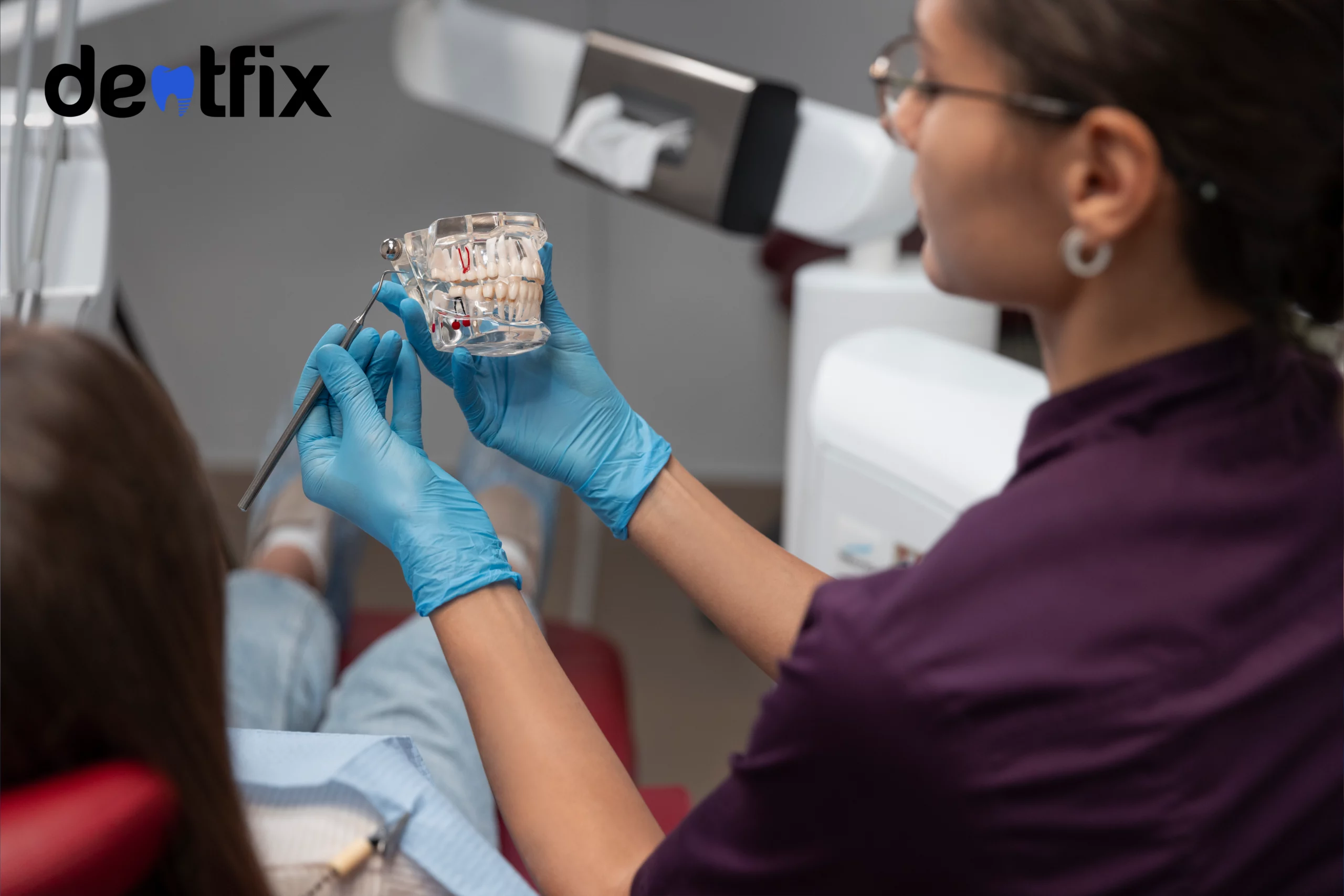If you have a gummy smile, you might be unhappy with the way your smile looks. What is a gummy smile? How to fix a gummy smile? These might be some of the questions you are looking for answers to if you suffer from this situation.
A gummy smile (also known as excessive gingival display) is a smile that shows a lot of gum tissue in proportion to the teeth. In general, a more proportionate smile is as one where the upper lip is just above the upper teeth (between 0 to 2 mm above). This doesn’t mean any other smile is by default less attractive, but the eye can perceive it as less symmetrical or disproportionate. People who have gummy smiles might experience discomfort from them. However, it is a common problem for many people and it should not be a cause for shame or concern. If you do have a gummy smile and want to change the way your smile looks, there are several options. You can choose from several both surgical and non-surgical methods. Keep on reading to find out how to fix a gummy smile.

What causes a gummy smile?
There can be several reasons why you have a gummy smile. These can include a jaw development problem, abnormal tooth eruptions, improper bite, hyperactive upper lip, muscular issues, etc. You will need to identify the reason for your gummy smile in order to fix it. Because you will first need to fix the underlying issue. Here are some quick definitions of the reasons for having a gummy smile:
- Jaw development problems: While your jawbone was developing, it might have formed a protrusion in your upper jaw. This would cause a gummy look when you smile.
- Abnormal teeth eruption: The teeth might appear shorter if they erupt in your gums in an abnormal way. This means that the gum tissue covers a larger proportion of the teeth. This does not mean that your teeth are necessarily short, but they merely appear shorter because of the gum tissue that covers them.
- Hyperactive upper lip: Hyperactive upper lip defines the condition when your upper lips move higher than the normal amount. This will expose the gum tissue more when you smile compared to a normal lip.
- Excessive gum tissue: Excessive gum tissue covering the teeth is a very common cause of a gummy smile.
- Gingival hyperplasia: Gingival hyperplasia happens when the gums get inflamed because of bacteria, medication, or underlying systemic conditions such as leukemia, HIV or diabetes. Gingival hyperplasia is on set and the underlying issues should be addressed before you can treat the gummy smile.
How to fix a gummy smile
There are several methods you can use to fix a gummy smile. You should always discuss with your dentist whatever dental issue you may have and choose the treatment options according to their diagnosis. After your assessments at your dental appointment, you can choose from a number of different treatments. The cause of your gummy smile will help you determine the right method to fix it. I can divide these methods into surgical and non-surgical as two groups. If you do not want to get surgery, you can explore the nonsurgical options below.
Non-surgical options for fixing a gummy smile
Not everyone is ready for a surgical option when it comes to fixing a gummy smile. So we are starting with all the non-surgical options you have. We will check every treatment available according to your situation and what you may need. So, let’s look at all your non-surgical options on how to fix a gummy smile.
Bite/Jaw problems? Try an orthodontic treatment
If the gummy smile you have is because of an orthodontic issue, such as a bad bite or a jaw problem, you can use orthodontic treatments (such as appliances like braces) that can improve it. A way you can choose a treatment is to pay attention to the gumline. If the alignment of the teeth points to the gumline, which is asymmetrical, the cause could be an orthodontic issue. Orthodontic treatments not only fix the gummy smile issue, but they also fix the more serious underlying issues like alignment and jaw problems. When the teeth move into their correct position, the gums do too as well. Orthodontic problems can be painful and cause significant problems for your health over time. After using these treatments, your gums will also appear smaller and give you a more proportionate smile. But this does not mean that in every case, they will be enough to fix the issue. Sometimes, you might require additional treatments to reach your desired outcome.
Small teeth? Try veneers or crowns
Another reason why your smile appears more ‘gummy’ is because your teeth might be small or short. In these cases, you might now have underlying issues like an improper bite or jaw problems. The reason for the gummy smile is because of a sense of disproportion that draws the attention of the eye to the gums. The reason for having short teeth might be genetics or wear and tear. Veneers and crowns are cosmetic dentistry options that allow you to design your smile according to your needs and preferences. You can consider getting veneers or crowns in order to change the size of your teeth and make them appear bigger. This balances out the proportion of teeth and gum to fix the gummy smile.
Try root planning & scaling
Root planing & scaling is a treatment that dentists use usually for plaque buildup on the teeth. However, it can be beneficial for you too, for eliminating a gummy smile. During the scaling procedure, the dentist removes the plaque from your teeth up to the roots. After scaling, they will do root planning, which will smooth the roots and allow gums to reattach, changing your gum line.
Hyperactive lip? Try botox
If you have a gummy smile because of a hyperactive upper lip but don’t want to go through surgery, you can try Botox. When you inject Botox into your upper lip, it will restrain it from moving too much by relaxing the muscles there. That way, your lip will not go as high up when you smile. This will cover your gums and your smile will be less gummy. Keep in mind that Botox is not a permanent solution. You will start seeing the results of the Botox treatment within a week. The results will last for about usually three to six months. After that period, you will either need to get Botox again or choose a different option to fix your gummy smile.
A very new technique: hyaluronic acid infiltration
In 2018, A. Diaspro introduced and proposed a new technique to treat excessive gingival display. This procedure would involve injecting a small amount of hyaluronic acid into the paranasal region of the face. This inhibits the mobility of side muscles of the region and lessens the rising of the upper lip when smiling. The procedure is similar to getting Botox but could be an excellent alternative to it as well. However, it is important to note that it is not suitable in all cases for a gummy smile. And since it is a fairly new technique, you should make sure to find a good ad experienced dentist in injections who has a very good knowledge of facial anatomy.
Surgical ways to fix a gummy smile
Most of the time, people think the issue with their gummy smile comes from short teeth. However, usually, it is because the gum tissue covers too much of the teeth because of a condition called altered passive eruption. The gum contouring procedures remove the excess gum tissue and give you a less gummy smile. Below, you can find the different gum contouring methods and other surgical options for fixing a gummy smile.
Gum contouring method? Crown-lengthening surgery & Gingivectomy
Crown-lengthening surgery or gingivectomy both refer to removing excess gum tissue and contouring the gum line.
Patients can also undergo a gingivectomy procedure which removes the unwanted gum tissue when it’s mild to moderate. Gingivectomy is among the most popular treatments for fixing a gummy smile. It not only removes the excess gum tissue but reshapes the gum tissue that remains. This allows your dentist to shape the teeth and gums to fit your desired smile. The healing period for a gingivectomy procedure is usually 1 week. You might experience mild swelling and tenderness during this period. You can start to see the results after that time.
Dentists use the crown lengthening method when they need to remove a lot of gum tissue. Teeth may look shorter if they are not fully formed. In this case, your dentist might perform surgery to lengthen your crowns. This surgery removes some gum tissue or bone and sculpts the remaining tissue, which allows more teeth to expose and gums to retrieve their usual position. The results of the crown lengthening surgery will be clearly visible in 4 to 6 weeks’ time.
The key difference between cosmetic gum contouring and some of the other methods, like getting veneers or crowns, is that it intervenes with the natural gums rather than creating an illusion.
Gum contouring method? Laser gum contouring
Another way to fix the excess gum issue is with a procedure called laser gum contouring. It is another cosmetic gum contouring procedure, like gingivectomy. However, this procedure uses special dental lasers that remove the extra gum tissue. Laser gum contouring is considered to provide more precision and a comfortable procedure than others. Your dentists will remove the excess gum tissue, and reshape the tissue that remains after the procedure in a way that exposes more of your teeth than your gums. This procedure is a less invasive option than some of the other methods you might come across. However, in both gingivectomy and laser gum contouring, you will receive local anesthetics and can experience some discomfort after the procedure.
Hyperactive lip? Try lip repositioning surgery
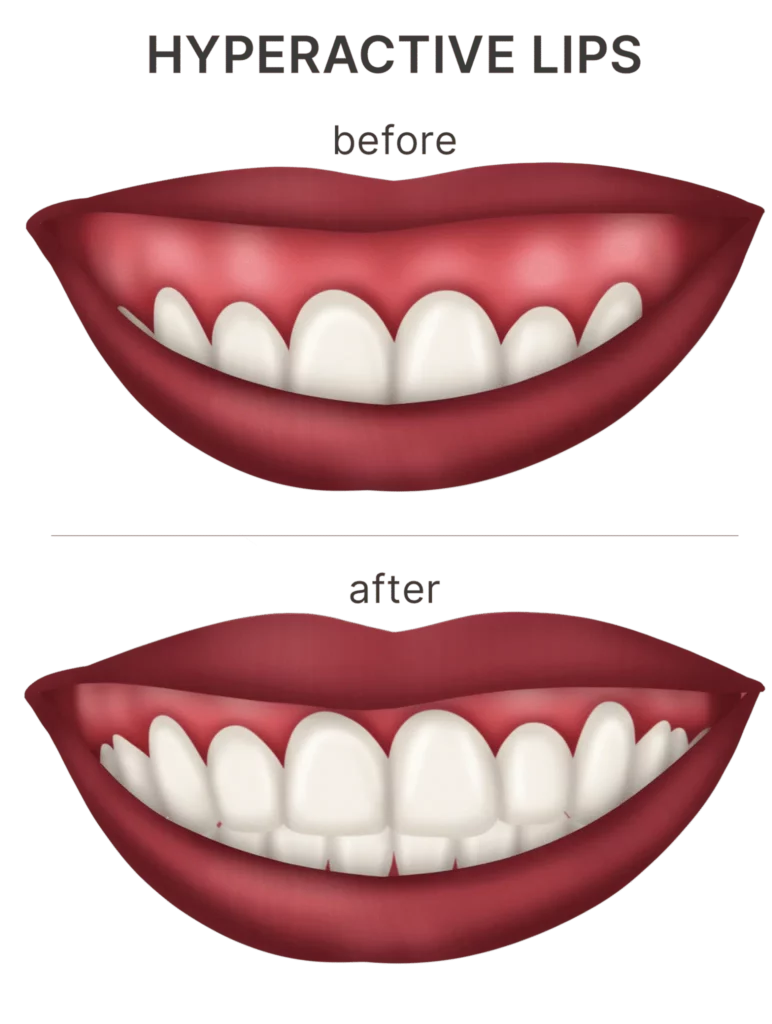
If the underlying issue for a gummy smile you have is a lip issue, you can get lip repositioning surgery. When your upper lip is short and/or hyperactive, more gum tissue will be visible while you are smiling. When you have this condition, the teeth and the gums might be in the right proportion, but because of the lip placement, your smile appears gummy nonetheless.
Lip surgery allows the dentist to reposition your lip, which will make the smile appear less gummy. Your dentist will make two incisions at your gumline, which is positioned under your lip. Then they will remove a thin line of gum tissue and suture the gum tissue to a lower point. Hence, when you smile, your upper lip will not go as high and cover the gums. This surgery is also a minimally invasive option that is very effective. Unlike what some people may think, the lips or the face are not actually affected at all.
The healing time for this procedure is about two weeks. During this period, you might experience some discomfort on the surgery site and some bruising. You might also need to avoid smiling for up to four weeks while your mouth and lips heal. This way, you will not affect the sculpted gumline that your doctor has made during your surgery. After four weeks, you can generally observe the full results of your surgery.
Tall upper jaw? Try Maxillofacial surgery
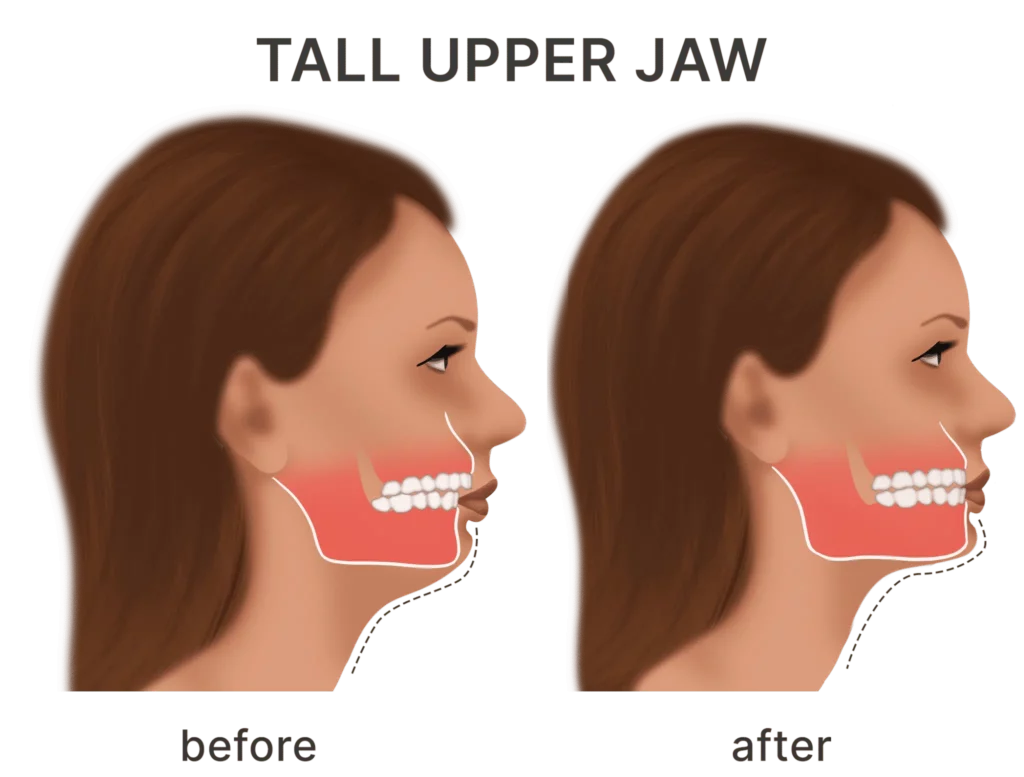
Sometimes the reason for a gummy smile is the disproportion in the facial bone structure. This is one of the least common reasons for a gummy smile, so not a lot of people might need this surgery to fix their gummy smiles. It is also the most complex surgery on this list, which we can essentially refer to as plastic surgery.
Some people might have a taller upper jaw compared to the rest of their faces. Usually, the ‘proportionate’ face is a harmonious three-part structure. These proportions are 1/3 for the forehead, 1/3 for the middle face (maxilla), and 1/3 for the lower face. Sometimes people’s faces grow in a way where the mid-face part is longer compared to the other parts. In medicine, this is called a vertical maxillary excess. This condition causes the upper lip to rise and expose more gum. To be able to fix this, you would need to get maxillofacial surgery.
How to choose a treatment to correct a gummy smile?
It is normal to feel overwhelmed by all the options we listed above for fixing a gummy smile. Sometimes the causes might overlap with more than one kind of treatment. That’s why we created the table below so you can compare different treatment methods more easily.
| Treatment | Surgical/Nonsurgical | Permanent/Temporary | Healing period | Underlying issue | Invasiveness |
| Orthodontic treatment (Braces, Invisalign etc.) | Nonsurgical | Permanent | 5 days | Misalignment, Jaw development problems | Non-invasive |
| Veneers & Crowns | Nonsurgical | Permanent | 2 weeks – few days | Small teeth | Minimally & moderatelyinvasive |
| Root planning & scaling | Nonsurgical | Temporary | Several days | Gum line below its proper place | Non-invasive |
| Botox | Nonsurgical | Temporary | 2-3 days | Hyperactive upper lip | Non-invasive |
| Hyaluronic Acid Infiltration | Nonsurgical | Several days | Hyperactive upper lip | Non-invasive | |
| Gingivectomy | Surgical | Permanent | 1-2 weeks | Excess gum tissue | Minimal to moderately invasive |
| Crown lengthening surgery | Surgical | Permanent | 3 months | Excess gum tissue, underdeveloped teeth | Minimal to moderately invasive |
| Laser gum contouring | Surgical | Permanent | 7-10 days | Excess gum tissue | Minimally invasive |
| Lip repositioning surgery | Surgical | Permanent | 2 weeks | Short/hyperactive lip, improper gumline | Moderately invasive |
| Maxillofacial surgery | Surgical | Permanent | 6-12 weeks | Tall upper jaw | Relatively Invasive |
How much does it cost to fix a gummy smile?
As with any dental procedure, it is hard to predict a certain cost without factoring in the individual predicaments. But, here are some of the general ranges of the costs of the treatment options we mentioned above.
- Botox injections into the upper lip cost between 200 to 600 dollars for a single session. Keep in mind that this is a temporary option, so you will need to keep getting injections when they wear off.
- Gingivectomy can cost between 1000 to 2500 dollars depending on the nature of the treatment.
- Lip repositioning surgery generally costs between 1800 dollars to 4000 dollars.
You might need more than one type of treatment to fix your gummy smile. As we mentioned above, when you have an orthodontic problem, fixing that does not always fix the gummy smile entirely. While you are calculating the cost of your treatments for correcting the gummy smile, make sure to calculate anything you might need extra.
For the most accurate estimate of your specific condition, consult with an accredited, professional dentist that has experience in fixing gummy smiles.
Conclusion
To sum it up, there is quite a few number of ways you can use to fix the gummy smile issue. You can choose from the surgical or nonsurgical options we listed above, according to the underlying issue for your gummy smile.
For most of the time, gummy smiles do not pose a health risk. However, they can create quite a lot of psychological stress for many people. It is very common to have a gummy smile and it can be corrected with mostly non-invasive to minimally invasive procedures. During your initial consultation with your dentist, they will identify the underlying issue of your gummy smile. You can then together choose the treatment option that fits your needs the best. If one of the methods we mentioned above sounds particularly interesting, be sure to discuss it with your dentist.
